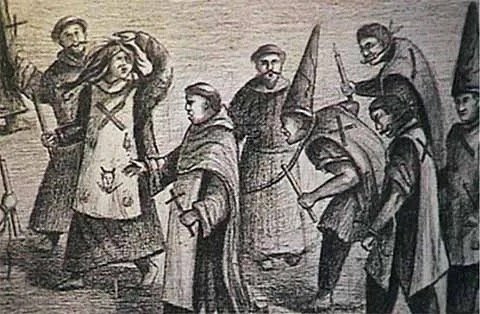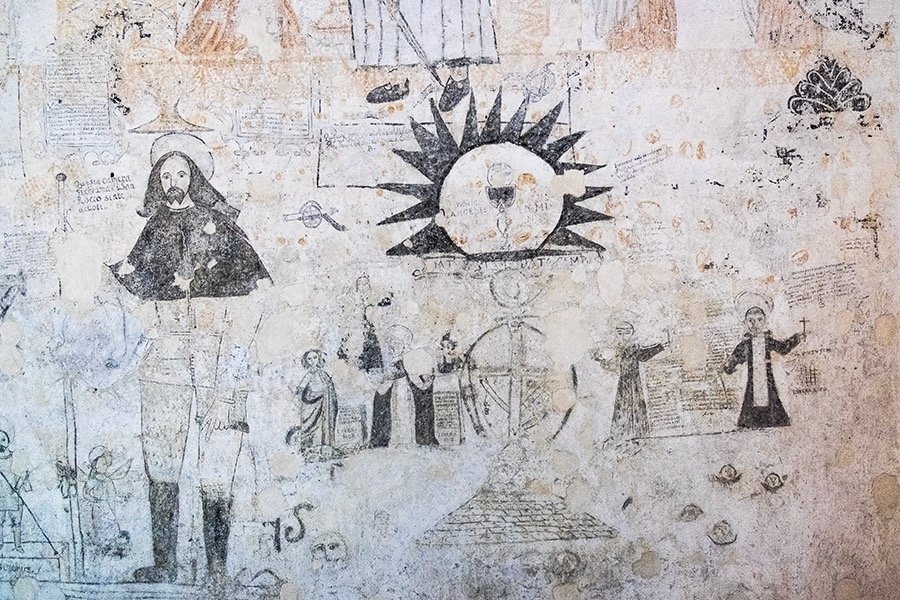{ Chapter One }
The public execution of the condemned by the Tribunal of the Inquisition, called the “act of faith” or auto-da-fé, was considered by the populace to be the same as “pageants” or “shows”. This is one of the few times that Natoli — evidently due to the necessity of carrying out the plot of the novel — indulges in historical inaccuracy, In fact, no public execution of the auto-da-fé took place in 1714. However, there is scrupulous adherence to reality in the description of the ceremony.
The stern ceremony included a series of processions that lasted for several days; the first was to “consecrate” the specially prepared stage, present the “offenders” to the people and create a sort of pseudo-trial with sentencing to a public punishment; others followed until the execution, as described by Natoli; the majority of the aristocracy took part in the procession, as did the judges of Sant’Offizio, the Compagnia dell’Assunta, and the Congregazione della Pescagione. AC, 349.
a public ceremony took place in Sant’Offizio
Founded in the thirteenth century and restored in 1523 by Viceroy Ettore Pignatelli, it occupied an entire block south of the Cathedral, between Via Incorazione and the Cassaro. Bombed in 1860, it was partially demolished to create Piazza Sett’Angeli. AC, 352.



